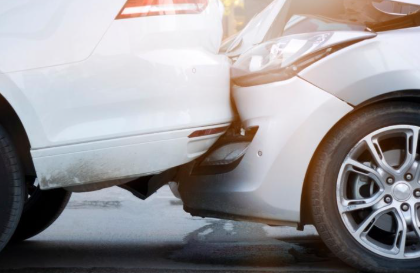
“Don’t drive tired.”
You might see these signs hanging over freeways pretty frequently on your commutes. That’s because fatigue is one of the main causes of car accidents.
Do you remember the last time you were drifting off at your work desk, or at home on the sofa desperately keeping your eyes open to watch the end of a movie? Something jolts you awake and your eyes pop back open – you definitely know it is time for coffee or bed.
Well, that is your natural fatigue detection system kicking in. The only difference is that you’re not sitting behind the wheel of a car and in control of a vehicle.
Fatigue and tiredness affect the way drivers control their vehicle. The ability to make quick decisions becomes seriously impaired, as you lose concentration and drift off into dreamland – and we all know it only takes a split second for a fatality to happen.
Enter: fatigue detection systems.
So, what are fatigue detection systems all about?
Not so long ago, the fatigue detection system came at a hefty additional cost, but as safety has become the main focus for manufacturers, and is a mandatory requirement in all new vehicles, fatigue detection is now readily available as a standard feature in most of the newer vehicle models.
They’re essentially just as the name suggests – the car detects signs of fatigue, and alerts the driver of it to ensure safety on the road.
Why do we need it?
We all know that distraction, drowsiness and fatigue can kill us and others, especially if we do not manage and control it. Statistics show that most serious accidents happen when it is dark or at dawn when you are getting tired after a long day or drive, or when you are still drowsy from waking up.
A fatigue detection system will keep you alert and most of all safe – providing you act upon the alert system. Even if it keeps alarming, it is your responsibility to make sure you stop driving and rest until you feel more awake to drive again. Remember, it is not just about your life and who is with you, but other drivers and their passengers too.
How does it work?
There are generally two types of fatigue detection in cars these days – direct and indirect.
A direct system uses a variety of different technologies to consistently monitor the driver and whether they are fatigued. Often, this is done through a camera that faces the driver. Facial recognition technology is an amazing thing, and it’s used here to monitor head position, eye movements, and even the angle of a driver’s gaze.
Meanwhile, indirect systems don’t focus on the driver – instead, they look forward to the road, monitoring the road and where the car is in the lanes. If the car starts to slightly veer out of the lane, this could be a clear indication of fatigue – and the system will pick up on this.
So what happens when the fatigue detection system detects signs of fatigue?
The system decides when it’s time to alert a driver through a sudden warning, that is both visual and audible. If the detection system picks up on erratic driving, a first warning will flash in the form of a message on the instrument and display panel, followed by a loud chime. If the message is ignored, the warning and chime becomes more frequent, until the driver takes action. The fatigue detection system alarm will not stop until the vehicle has stopped and the driver’s door has been opened. The only way you can reset the system is if the engine has been turned off and then restarted.
It’s not uncommon for the latest vehicles to have an inbuilt fatigue detection system that works in conjunction with other safety features, such as lane assist, side assist, lane departure warning, predictive pedestrian protection, blind-spot detection and traffic jam assist.
The future fatigue detection system
Technology is moving so fast, it’s sometimes hard to keep up with what is going on. Engineers Australia has said that, “the new system is able to go further and detect a wider range of symptoms in order to improve both accuracy and safety. Researchers plan to incorporate a small GPS receiver to collect the position of the vehicle and a wireless module that allows it to connect the system with the drivers’ smartphones, so that, as a last resort, the system is able to make an emergency call.”
Things seem to be driving in the right direction when it comes to safety and fatigue detection systems, with more safety features that were once a luxury addition now standard in new cars. Take the new Skoda Scala, for example – it has an extensive list of safety features with an inbuilt fatigue detection system, and is an ideal option for those who want to feel safe and sound on the road.







